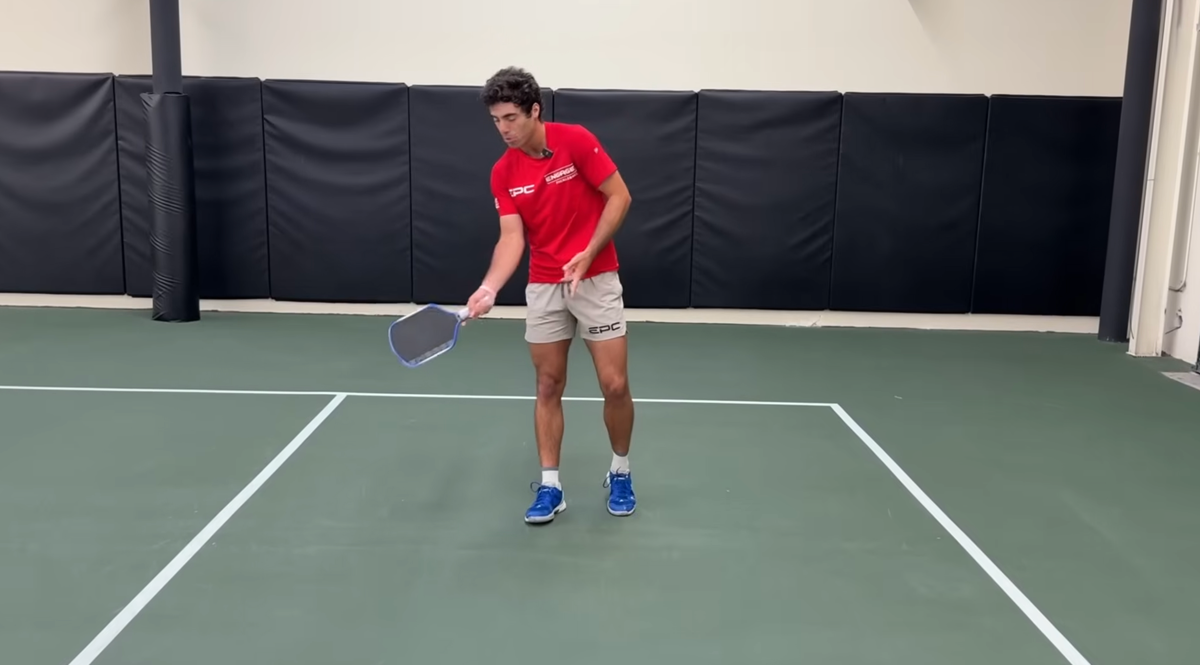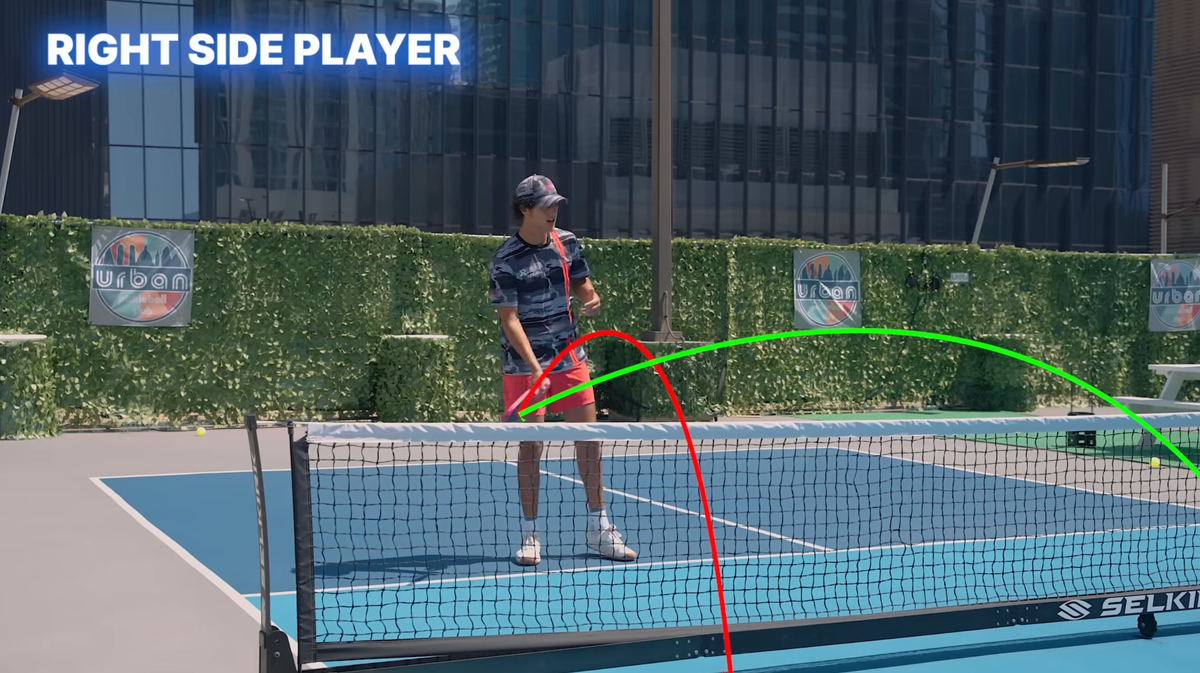What is the ideal weight for a pickleball paddle for senior players?
The ideal weight for a pickleball paddle for senior players typically falls within the lightweight category.
For Male Senior Players:
- Weight Range: Many male senior players might prefer new paddles in the 7.3 to 8.4 ounces range. This weight provides a good balance between power and control, allowing for stronger serves and returns while still being manageable for quick volleys and sustained play without causing undue strain on the arm, elbow, and shoulder.
For Female Senior Players:
- Weight Range: Female older players often opt for paddles on the lighter side, approximately 6.5 to 7.8 ounces. Lighter paddles can offer easier maneuverability and less stress on the joints, which is beneficial for play over extended periods. They allow for precise control and quick reactions at the net, which are crucial for the strategic aspects of the game.
Lightweight paddles are easier to handle and maneuver, allowing for better control over shots without sacrificing too much power.
It’s essential for senior players to choose a paddle weight that feels comfortable and suits their playing style, as individual preferences can vary. Testing different paddle weights before making a purchase is highly recommended to find the perfect match.
How do you determine the weight of your pickleball paddle?
Determining the weight of a pickleball paddle is straightforward and can be done using a few simple methods. The most accurate way to measure the weight of a pickleball paddle is by using a digital kitchen scale, which can provide a precise reading in ounces or grams. Here’s how to do it:
- Find a Digital Scale: Use a digital kitchen scale that is capable of measuring small weights accurately. Make sure the scale is calibrated and set to the correct unit of measurement (ounces or grams) that you wish to use.
- Prepare the Paddle: Before weighing, ensure that the paddle is free of any additional items like ball holders or grip tape that you might have added and aren’t part of the paddle’s original weight. This will give you an accurate measurement of the paddle itself.
- Weigh the Paddle: Place the paddle gently on the scale, making sure it is fully supported and not touching anything else. Wait for the reading to stabilize and take note of the weight displayed.
- Compare with Specifications: For a new purchase, you can also compare the weight measured with the manufacturer’s specifications, which are often listed on their website or product packaging. This can help confirm the accuracy of your measurement.
Remember, the ideal paddle weight varies among players based on personal preference, playing style, and physical considerations.
Is it better to have a lighter or heavier pickleball paddle?
The choice between a lighter or heavier pickleball paddle depends on your playing style, physical strength, and personal preferences. Each has its advantages and considerations:
Lighter Paddles (6.5 – 7.5 ounces)
| Pros | Cons |
| Easier to maneuver, less strain on the wrist, arm and shoulder, which can reduce the risk of injuries such as tennis elbow. They offer better control, making them ideal for players who prioritize precision and finesse over power. | May provide less power behind shots, requiring players to exert more effort when hitting the ball to generate the desired speed. |
Heavyweight Paddles (7.8 – 8.5 ounces and above)
| Pros | Cons |
| Generate more power with less effort, beneficial for driving the ball deep into the opponent’s court or executing powerful serves and smashes. They can also offer more stability upon impact, reducing ball deflection. | Can be more tiring to use over long periods, potentially leading to increased fatigue or strain. Might be less suitable for players with previous arm or shoulder injuries. |
Making the Choice:
- Playing Style: If you enjoy a game based on quick reactions and finesse, a lighter paddle may be more suitable. If you rely on power and deep shots, consider a heavier paddle.
- Physical Considerations: Players with concerns about arm, wrist, or shoulder strain might opt for a lighter paddle to minimize injury risks.
- Personal Preference: Ultimately, comfort and personal preference play significant roles. It’s advisable to test paddles of different weights to see what feels best in your hands and suits your game.
In summary, there isn’t a one-size-fits-all answer. The best approach is to consider your playing style, physical condition, and, if possible, test various paddles to find the one that feels most natural and enhances your game.
When should a senior choose a heavier pickleball paddle?
A senior player might opt for a heavier pickleball paddle in certain situations where the benefits of added weight align with their playing style, physical condition, and specific needs on the court.
Here are a few scenarios where a heavier paddle could be the right choice:
- Seeking More Power: Heavier paddles naturally provide more power behind shots with less physical effort required from the player. Seniors who find their game benefits from driving the ball deep into the opponent’s territory or those who enjoy a powerful serve may find a heavier paddle advantageous.
- Stable Play: A heavier paddle can offer more stability upon impact, reducing the paddle’s vibration and making it easier to control the ball when hitting. This can be particularly beneficial for seniors looking to improve their accuracy and reduce the chances of the ball deflecting off the paddle at unintended angles.
- Good Physical Condition: Seniors who are in good physical condition and have strong arms and shoulders may prefer the heft of a heavier paddle for the added benefits it brings to their game without significantly increasing the risk of injury.
- Playing Doubles: In doubles play, where quick net play and power shots are common, a heavier paddle can be a great asset. It allows for quick volleys and powerful smashes, helping seniors to be more competitive in fast-paced scenarios.
- Preference for Groundstrokes: Players who rely more on groundstrokes from the baseline than on quick net play might benefit from the extra momentum a heavier paddle provides, enabling deeper and more powerful shots.
However, it’s crucial for senior players to carefully consider their physical capabilities and any pre-existing conditions, such as arthritis or tendonitis, that could be exacerbated by the use of a heavier paddle.
3 best Pickleball paddles for seniors
Here are 3 highly regarded pickleball paddle models and brands that cater to the needs and preferences of senior pickleball players:
1. Selkirk Amped S2 X5 FiberFlex Pickleball Paddle
- Features: This paddle stands out for its innovative FiberFlex fiberglass face and X5 polypropylene honeycomb core, which provide an excellent balance of power and control. It’s designed with a comfortable grip and a large sweet spot, making it easier to hit the ball consistently. The Selkirk Amped S2 is available in both lightweight and midweight options, allowing seniors to choose based on their preference for maneuverability or power.
- Ideal For: Seniors looking for a high-quality paddle that offers versatility and comfort during play.
2. Engage Encore Pro Pickleball Paddle
- Features: The Engage Encore Pro is known for its exceptional touch and control, thanks to its specialized polymer core and proprietary fiberglass skin. This paddle is designed to maximize the time the ball stays on the paddle, allowing for more precise shots. It’s available in several weight options, catering to players who prefer either a lighter touch or more drive behind their swings.
- Ideal For: Senior players seeking a paddle that enhances ball control and provides a soft feel for reduced strain on joints.
3. Paddletek Tempest Wave Pro Pickleball Paddle
- Features: The Tempest Wave Pro features a high-grade graphite face and a polymer core, balancing control and power beautifully. Its lightweight design makes it easy to handle, reducing the risk of arm fatigue. The paddle also boasts a comfortable grip size and a long handle, making it easier for seniors to hold and swing.
- Ideal For: Seniors in search of a lightweight option with professional-grade performance that doesn’t compromise on power or control.
If you want to choose from more options, make sure also to check out our guide on the 5 best pickleball paddles for beginners.
When selecting among heavy paddles, midweight paddles and lighter paddles, seniors should consider not just the paddle’s specifications but also how it feels in hand during play. Trying out different models, if possible, can be incredibly beneficial to find the perfect match for one’s personal playing style and physical needs.
How useful was this post?
Click on a star to rate it!
We are sorry that this post was not useful for you!
Let us improve this post!
Tell us how we can improve this post?
Anuncie Aqui / Advertise Here
Sua marca para o mundo Pickleball! / Your brand for the Pickleball world!

 English
English  Spanish
Spanish  Portuguese
Portuguese  German
German  Italian
Italian  Japanese
Japanese  French
French  Polish
Polish  Russian
Russian  Netherlands
Netherlands  Hungarian
Hungarian  Turkish
Turkish  Videos
Videos  Pickleball Union
Pickleball Union











 English (US) ·
English (US) ·  Portuguese (BR) ·
Portuguese (BR) ·